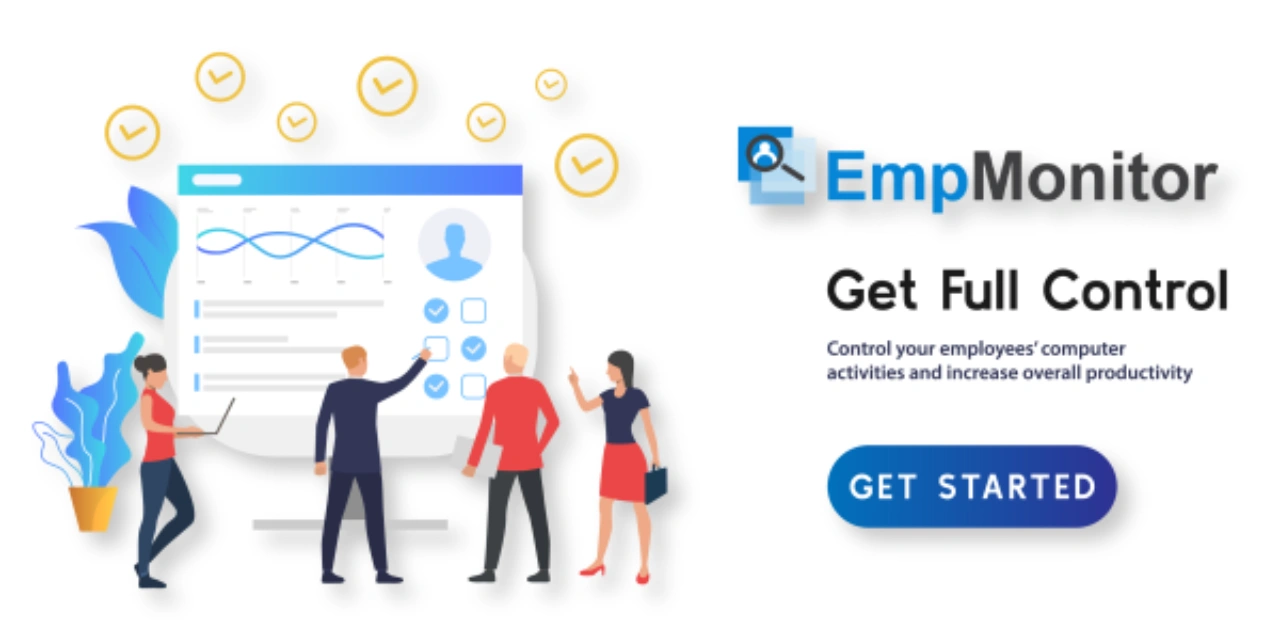Hiring the right people is just the first step in building a great team. To truly set your new hires up for success, clear performance standards are essential.
These standards are not just about setting expectations; they are a roadmap for your team to follow, ensuring everyone is aligned and working towards the same goals.
Standards of Performance are essential for defining expectations and keeping your team’s efforts on track with the company’s objectives. They serve as quantifiable benchmarks to gauge the extent to which employees succeed in their jobs, whether that involves hitting certain targets, delivering quality output, or attaining productivity milestones.
By defining what “good” and “excellent” performance are, these standards provide the clarity and guidance required to drive consistent outcomes across your team.
Indeed, studies show that companies with clear performance standards have a 12% improvement in employee performance relative to those that do not. When expectations are clear, workers are more attentive, motivated, and productive.
So, in this guide, we will take you through all you need to know about performance standards and why they matter.
In a hurry? Listen to the blog instead!
What Are Performance Standards?
Performance standards definitions are clear, written statements of the outcomes you want from an employee in a job. Consider the connection between job duties and actual results, they specify how well things should be done, not merely what needs to be accomplished.
Rather than relying on vague goals like “do your best,” it is important to define performance standards that clearly outline what is considered satisfactory, what exceeds expectations, and where improvement is needed.
For example, a customer support representative might be expected to resolve 90% of tickets within 24 hours, while a content writer could be measured by both the quality and volume of published articles.
These standards are employed to assess performance objectively and uniformly across the board. They also help managers provide more objective feedback, and employees have no idea what’s expected, no surprises, no guessing.
The performance standard definition is not about micromanagement, it’s about employee development. These standards create a clear framework for success while intentionally leaving space for individuals to grow into their roles and apply their unique strengths.
Why Are Performance Standards Important?
Without standards, even the most talented employees can be working in the wrong direction. That is where performance standards step in; they add focus, accountability, and consistency to your entire team.
First, they remove ambiguity. When individuals are clear on what’s expected of them, they are more likely to meet or surpass those expectations. It also makes onboarding easier, as new employees can ramp up more quickly when they know what success looks like from day one.
Second, performance standards encourage fair and constructive feedback. Rather than responding based on gut intuition or general impressions, managers can assess performance according to well-documented, clearly defined criteria. This enhances credibility and strengthens employee-manager relationships.
And most importantly, high standards help to align individual efforts with overall business objectives. When everyone is working in the same direction, productivity increases, and so does morale. Gallup finds that employees who strongly agree they know what’s expected of them at work are 2.5 times more likely to be engaged.
So, whether you are managing five people or fifty, understanding what is a performance standards and setting strong ones is not just a box to check it’s the foundation for long-term success.
Also Read!
Employee Performance Tracking: What It Is And How To Do It In 2025
Key Strategies to Improve Job Performance in 2025
How To Measure Employee Quality of Work In 2025? 5+ Types With Examples
Types Of Performance Standards
What applies to one job does not always translate to another. You would not evaluate a customer support broker in the same way you would evaluate a software engineer. That is why performance standards are used to be separated into categories, each of which calls out a different lens to use when judging how well a person is doing their job.
Here is a closer examination of the most popular ones, along with examples to bring them into the real world.
1. Quality Standards
Quality standards focus on the extent to which a task is accomplished. It is not merely doing a job, it is doing it with reliability, care, and precision. These standards are essential in positions where accuracy, compliance, or brand presentation are important.
Example: A QA tester at a tech firm should be able to identify 98% of software bugs before a release. A content writer could be measured by grammar, tone consistency, SEO fit, and readability. It’s not sufficient to hit publish, it must hit the mark.
2. Quantity Standards
Here, the metric is plain output. This serves in positions where quantity is vital, the pace does not affect quality. It provides a baseline for what productivity looks like.
Example: A sales broker is expected to make 80 outreach calls a day. A warehouse associate might be required to process 120 orders during a shift. For quantity standards to be fair, the complexity of the task needs to be factored in, so you’re not just rewarding speed, but sustained performance.
3. Timeliness Standards
When developing performance standards, timeliness plays a key role, especially in deadline-driven roles or businesses with strict SLAs (service-level agreements). It ensures tasks are completed quickly enough to keep operations running smoothly.
Example: A customer support team might need to answer support tickets in 2 hours and close them in 24 hours. In marketing, going live on certain dates, such as Black Friday or quarter-end pushes comes under this. Timeliness is not about speed; it’s about reliability and accountability.
4. Cost-Effectiveness Standards
Efficiency is an important standard of performance in this context. These measures track how well employees consume resources, time, budget, and equipment to achieve the task without overspending. It’s usually tied to ROI (return on investment).
Example: A pay-per-click (PPC) professional should be able to deliver leads under a cost-per-acquisition of $10. A project manager may be evaluated on how well he or she can deliver a project within a predetermined budget without compromising scope and quality. The aim is to achieve results by making intelligent resource allocations, not skimming off.
5. Behavioral Standards
Not everything is quantifiable. Behavioral standards evaluate the way a person completes his or her work, picturing professionalism, teamwork, attitude, and communication. These are the building blocks of a healthy workplace, particularly when teamwork and people skills are involved in the job.
Example: A team lead would be expected to exhibit leadership by driving weekly stand-ups, providing constructive criticism, and resolving conflicts among team members without losing their cool. A new employee might be assessed on a willingness to learn, reliability, and adherence to company procedures. These expectations help define the culture and influence performance.
By defining what is performance standards are, you can provide everyone with a clear understanding of expectations, leading to better alignment and consistent performance.
Why this matters: Choosing the right combination of these standards gives structure to your expectations while still allowing flexibility. It ensures you are not measuring employees with a one-size-fits-all approach but are aligning your evaluation methods with the reality of the work.
How To Keep Employees Informed About Performance Metrics?
Performance standards are a good start, but if your employees are not aware of what’s being measured or why, those standards won’t travel very far. Engaging employees in the process isn’t only about transparency, it’s about trust-building, accountability, and connecting the dots so people can see how their work contributes to the larger picture.
So, how do you ensure your employees know what’s expected of them and how they’re doing?
Here’s what gets results:
1. Make Metrics a Regular Part of the Conversation
Begin by interweaving performance measures into your standard check-ins and team meetings. When expectations are openly and regularly discussed, they no longer feel like secret scorecards and begin to feel like shared objectives.
Example: A team lead could start weekly stand-ups with a brief scan of key metrics, such as completed work, campaign outcomes, or response times. Not to put anyone on the spot, but to keep everyone on the same page.
2. Visualize the Data
Spreadsheets are good, but they do not describe a story. Use dashboards, graphs, or simple visual reports to present how performance is trending over time. It will help the team members understand progress and detect problems early.
Tip: Use something like EmpMonitor or even a tailor-made KPI board in your office (or virtual office) space to help performance data be easily digestible.
3. Break Metrics Down by Role
Generic metrics cause confusion. Tailor performance indicators so that they mirror what success will look like for every role. This brings clarity and allows individuals to concentrate on the correct outcomes.
Example: For a content writer, concentrate on metrics such as content engagement and publishing frequency. For a support rep, focus on resolution times and customer satisfaction ratings.
4. Encourage Two-Way Feedback
Don’t make performance monitoring a one-way process. Ask employees to tell you what metrics they find useful or overwhelming. The most valuable insights usually come from the individuals doing the work daily.
Tip: You can even engage employees in determining the performance markers for their jobs. This makes them more engaged, and more likely to meet those targets.
5. Celebrate Success, Not Just Setbacks
Performance conversations only happen when something goes wrong; they can feel like bad news. Instead, make it a habit to celebrate wins, big or small. Acknowledging success supports positive behavior and boosts morale.
For instance, a quick shoutout in your internal Slack channel for someone hitting their monthly target can motivate them far more than a formal review ever could.
The goal is not to overwhelm your team with data, it is about creating a shared understanding of success. When people know where they stand and what’s expected, they are more likely to rise to the occasion and feel proud of their work.
That is where EmpMonitor comes in. By providing real-time insights into performance metrics, task progress, and productivity trends, EmpMonitor helps managers recognize achievements as they happen, not just during annual reviews.
It’s about turning feedback into fuel for growth.
How EmpMonitor Is Useful For Your Team
When you are trying to build up performance standards across your team, seeing into the daily work patterns is not a nicety; it’s a necessity. EmpMonitor fills in as a clever productivity management solution that quietly collects the insights you require, without intruding on the workflow.
EmpMonitor is productivity monitoring software that provides transparent and in-depth information about employee activity, performance, and productivity. It allows managers to monitor time spent on assignments, watch application and site usage, and consider trends to see how work is accomplished.
Here’s how it works in practice:
Time-Tracking: EmpMonitor tracks every active and idle time, providing a complete view of how time is utilized during work hours.
EmpMonitor allows you to recognize delays, streamline processes, and promote improved time management, particularly for remote or hybrid teams.
Monitoring User Activity: This feature tracks the data and sites being visited, and it allows managers to see where attention is going. It’s not control, it’s about seeing the work habit reality and making more informed decisions based on the reality of use.
Employee Monitoring: EmpMonitor provides a common dashboard to make it simple to view performance per team. Filter down by department, job title, or person to identify outliers, see workload distribution, and intervene where assistance is required.
Insider Threat Prevention: Performance is not just a part of productivity; it’s also an issue of security and trust. EmpMonitor raises the alarm on high-risk behavior, like viewing forbidden files or unusual login activity, to prevent insider threats before they can become a problem.
When managers and teams can access the correct data, it becomes simpler to select equitable and achievable performance, and even simpler to meet them. This productivity management tool assists with improved resource allocation, more effective processes, and shows a stronger culture of accountability.
How To Make Performance Standards Simple & Effective?
Setting performance standards is not a checklist procedure, it is a way of making your people clear about what they need to do and how to do it.
But for this to be achievable, your standards must be clear, measurable, and fair.
Here’s how you can set them step by step:
- Go over the current job description and make sure it still reflects what the role involves.
- Talk to the employee about how their daily tasks align (or don’t) with the written responsibilities.
- Review past performance goals to understand what was achieved and where there might have been challenges.
- Identify which company values are most relevant to the organization and the role itself.
- Choose the specific areas of the job that define success, such as efficiency, quality, or customer satisfaction.
- Find measurable metrics that can track progress in those areas, like turnaround time or task completion rates.
- Set up a clear and consistent rating scale, usually from 1 to 5, to evaluate how well employees meet the standards.
Keep in mind that the goal here is not to micromanage, it is to give people a framework they can trust.
By defining performance standards clearly, employees gain confidence in their work, managers have something concrete to refer to, and the entire team benefits from a more transparent, productive environment.
Final Thought
Performance standards have nothing to do with stressing out your team, and everything to do with setting a clear direction. When expectations are clear, measurable, and linked to real results, everyone can concentrate on what matters most: doing great work, learning together, and driving shared results.
Whether you are collaborating with a small in-house team or a distributed team across time zones, defining and maintaining high levels of performance makes it easy to lead with clarity and purpose. It also creates trust, because when people know what they need to do, they are more likely to do it.
Make it a team effort, keep your goals real, and keep your employees aware.
That’s how you establish a culture where performance is not forced; it just occurs.
FAQ
- How often should performance standards be reviewed or updated?
Ideally, review them every 6 to 12 months—or whenever there’s a major shift in responsibilities, tools, or business goals. Regular updates ensure they stay relevant and aligned with the actual work being done.
- Should performance standards be the same across all departments?
Not at all. Standards should reflect the nature of the role, the goals of the department, and the skills required. Customization helps ensure fairness and clarity for everyone involved.
- What if an employee consistently meets standards but does not go beyond them?
That’s still a win. Meeting expectations is valuable, but if you are looking to nurture high performers, consider introducing development plans or growth incentives to help them level up.
- What do job performance requirements describe?
Job performance standards requirements describe the essential duties, responsibilities, and expectations tied to a specific role. They outline what tasks need to be completed, how they should be done, and the level of quality or timeliness expected. These requirements help ensure that both employees and managers are on the same page from
















